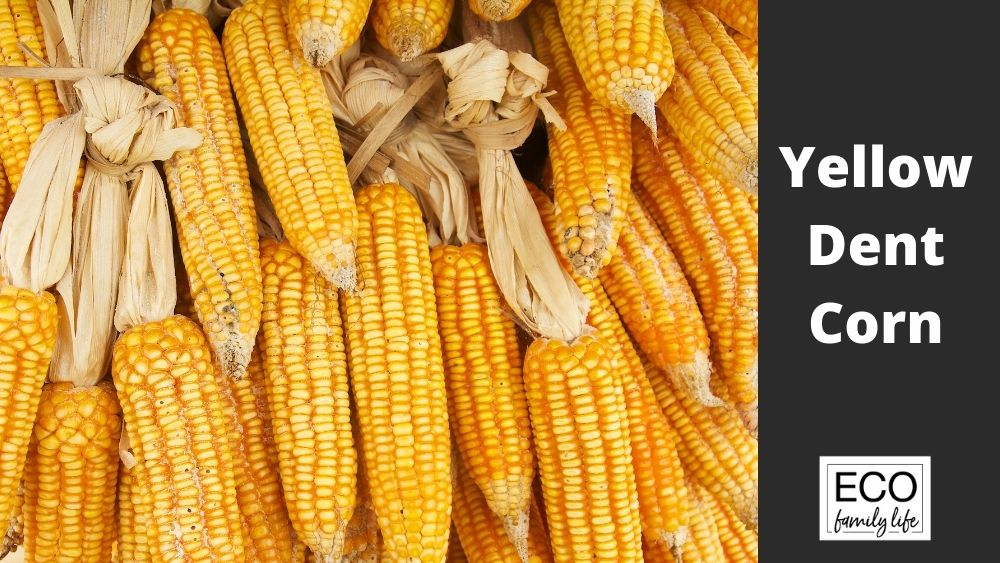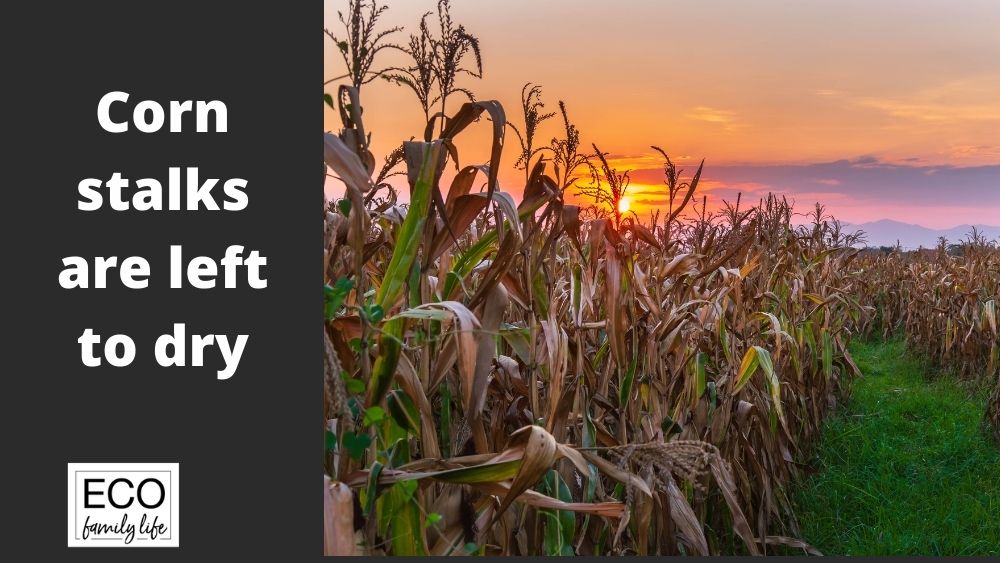If you’re out for a drive and you’re driving past lots of cornfields, you might notice that farmers tend to let their corn stalks remain in the field until they turn brown. While this might seem like a mistake, the truth is that in reality, the corn is simply drying, not dying.
Once you learn a little more about the planting, growing, and harvesting process of corn, the fact that there are so many brown corn stalks in so many fields will make more sense.

This article will explore why farmers let their corn turn brown in the fields and what they do with the corn stalks.
Getting started with the basics
The first thing you should know about corn is that more than 95% of all corn grown in the United States is not sweet corn, which is contrary to what most people believe. Most of the time, the corn grown in U.S. fields is known as yellow dent corn, and it is used to feed live livestock, fuel cars, and make various products that include starches, adhesives, plastics, and so much more.

While sweet corn is harvested early in the growing season, that is not the case with all other corn, which needs to remain in the field a little bit longer.
Both sweet corn and yellow dent corn are pollinated right before the kernels appear. The sweet corn is then harvested soon afterward.
Yellow dent corn stays in the field for much longer. After the kernels are formed, the milk stage arrives, and it’s called this because at this point, the kernels have a liquid in them that is milky in consistency and can squirt out if you squeeze them.
Under this is the dough layer, where the kernels become a little more solid. After the dough, you can see the black layer. Black equals physiological maturity for the corn kernels.
As you’ve likely already guessed, there is then a black layer at the top of each corn kernel. Even so, there is usually about a month more until it gets anywhere near the harvesting time.
In the meantime, the farmers have to check the moisture content of the corn until it’s ready to be harvested. This is why when you see corn that looks brown in the corn fields, it is waiting to be dried to the proper level, which is 15% moisture.
The corn drying process
Corn has to be dried and has to have a 15% moisture content to be stored in a grain elevator. If you see the black layer in the corn’s kernels, that layer holds around 35% moisture. If the farmers deliver to the grain elevator when the moisture content is higher than 15%, they’ll be charged a premium, which is an extra charge, to cover the drying costs that the grain elevator has to incur.

The premium isn’t charged if the moisture content stays at 15%, so it’s less expensive for the farmers. If you’re wondering just how the corn kernels get dry, many farmers have special dryers that dry the corn. These dryers are powered by propane and allow the wet grain to be dried in batches.
There is a larger burner fan that pumps air and can get up to 200 degrees Fahrenheit, and this is how the corn is dried. After a certain period of time, floor traps open up and another batch of corn enters. This is how the corn-drying process usually works.
It costs farmers money to dry their corn, whether they allow the grain elevator operator to do it or they use the special drying machine just described. To save some money, many of them leave their corn in the field until the moisture content gets down to 15%.
The dryer the corn gets, the browner it gets. Some farmers begin the harvesting process when the corn is at 20% to 25% moisture. They also sometimes plant various maturities of corn to spread out the drying process.
The advantages of letting the corn dry naturally
Letting the corn dry naturally is less expensive and more convenient for the farmer, and it also allows farmers to store the corn much longer because it has more of an opportunity to get down to 15% moisture.
Wet corn can start to become ground up and it can even damage the corn to run it through a combine when it’s wet. In other words, it is crucial that corn be very dry before being stored somewhere because there are too many potential problems otherwise.
By the time the corn is harvested, some of the brown stalks are still left in the ground, and they sometimes stay there throughout the winter. That being said, farmers must get rid of the stalks before the next season begins, and they can do this in several ways.
Many of them will remove the short stalks to prepare for the following growing season, but others choose instead to cut up the stalks and make a sort of compost out of them, which melds the stalks into the soil and makes the soil a lot healthier. This, in turn, helps produce a better crop the following season.
Conclusion
The next time you notice a field full of brown corn stalks, consider that instead of dying, the stalks are actually drying! The dryer the corn is, the better the results are when the corn is being made into something else.
The natural process of letting the stalks dry while they’re still in the field is both less expensive and more convenient than drying them any other way. When they’re dried this way, it is a little easier for the farmers to continually check the moisture content of the corn so they can decide when it’s time to harvest the stalks.
This doesn’t mean that being a corn grower is difficult, but at least now you know some of the reasons why growing corn can be a bit of a challenge at times.
Happy growing.
I am an accredited practicing dietitian, experienced gardener and a dedicated cook. I love writing and sharing my experience so you can learn from my successes and mistakes.
